Some professionals focus on offering the lowest-cost or smallest notebooks. Others, just want workstation-on-the-go platforms, and that is the segment that the Lenovo ThinkPad P17 targets. As the name suggests, this is a 17″ notebook that leverages the larger chassis to offer a bigger screen and more hardware capabilities. Let us look at the Lenovo ThinkPad P17 (17″) mobile workstation overview and continue our performance testing.
Lenovo ThinkPad P17 (17″) Mobile Workstation Overview
The size of the Lenovo ThinkPad P17 (17″) comes in at 16.36″ x 11.06″ x 0.99-1.31″ thickness and weighs in at 7.7 pounds with starting config. Processor options range from Intel Core and Xeon class with 4, 6, and 8 cores with two options for those that require Xeons with 6 and 8 core versions. These can use ECC memory or non-ECC memory. Up to two drives can be installed with up to 2TB NVMe M.2 SSDs. Graphics are supported by NVIDIA offerings with Quadro T1000, T2000, Quadro RTX 3000, RTX 4000, and RTX 3000 to complete the line-up.
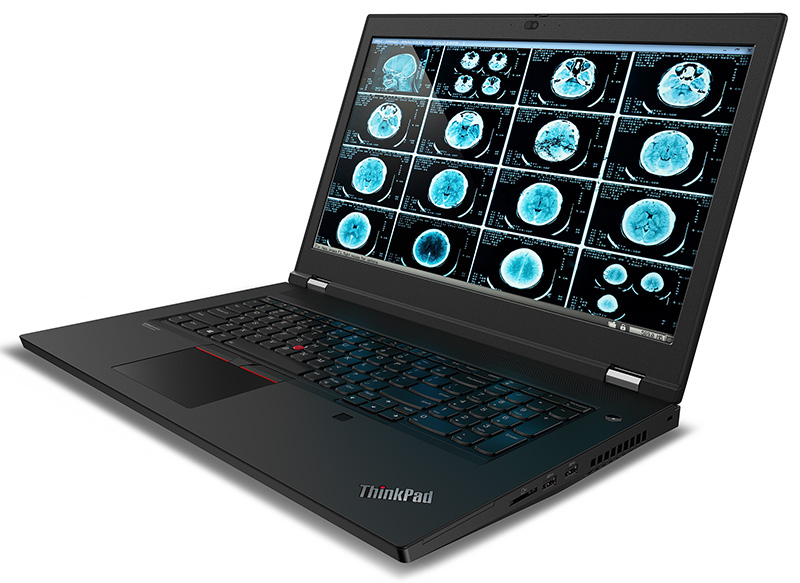
Our Lenovo ThinkPad P17 (17″) mobile workstation test unit came with a 17″ UHD 3840×2160, IPS screen with anti-glare, this is the highest-end option available. Colors were crisp and sharp, at 17″ size it was tough to read at max settings, scaling up to 250% is recommended for general work usage. One can also connect the Lenovo ThinkPad P17 (17″) Mobile Workstation to an external display for extended work at higher screen resolutions.
The keyboard is of standard Lenovo type, smooth and ample keypress feel to it.
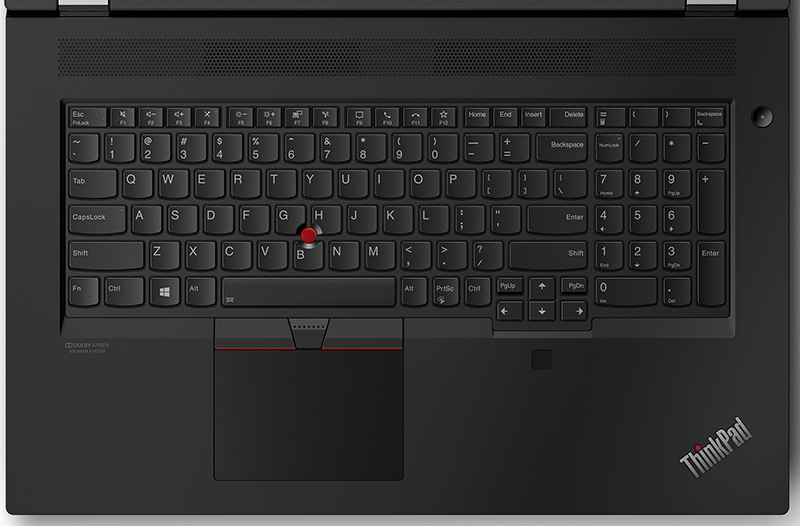
Speakers located in the space above the keyboard on the Lenovo ThinkPad P17 (17″) Mobile Workstation give ample audio output for most general use.
Let us take a look at the various ports on the Lenovo ThinkPad P17 (17″) Mobile Workstation sides.
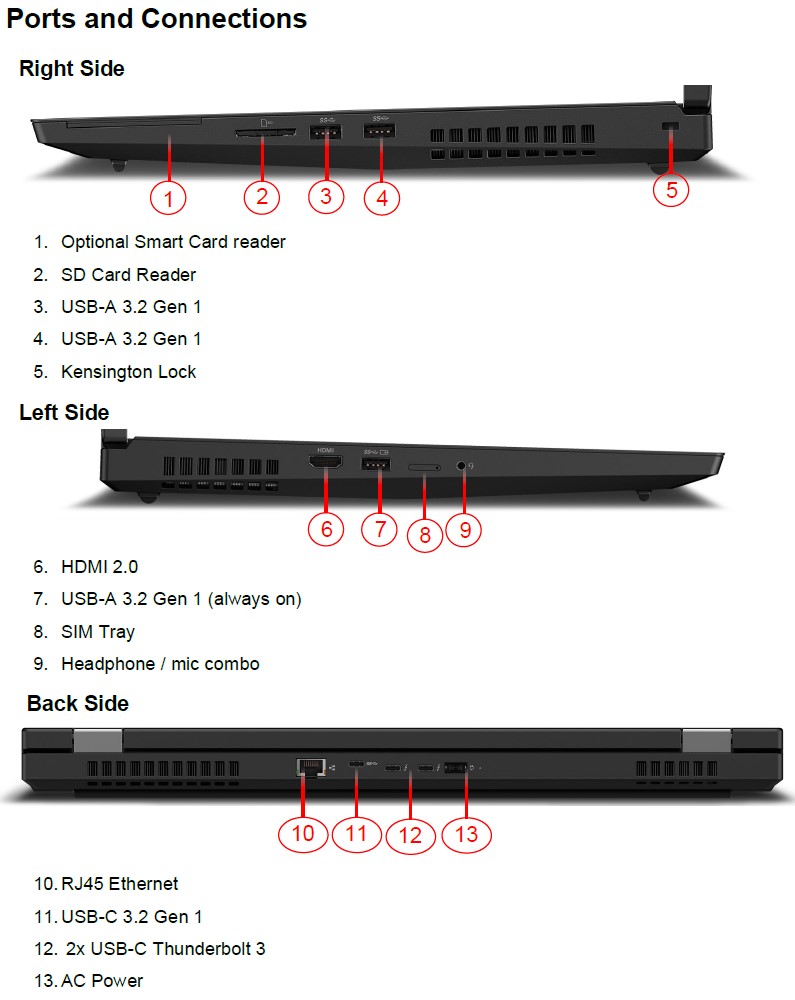
Our sample Lenovo ThinkPad P17 came with 128GB of installed ECC Memory. There are a total of 4x SODIMM sockets. Our sample has 2x 64GB DDR4 ECC SODIMM sticks installed. Many notebooks come with either soldered RAM or with two SODIMM slots.
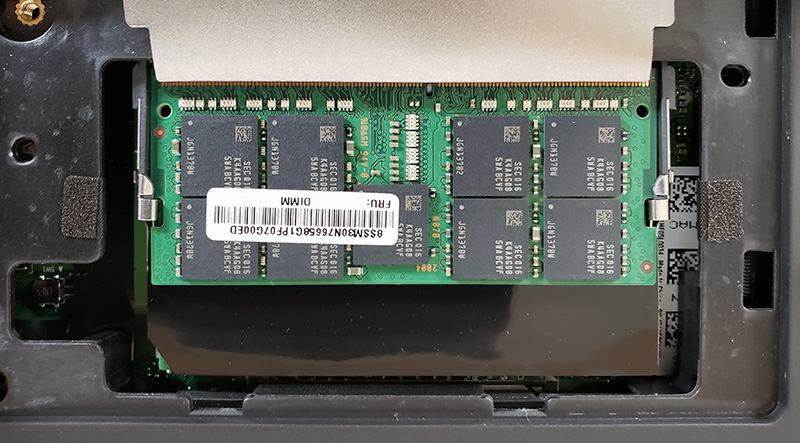
We will note that only two SODIMM sockets can be accessed in this location. As a mobile workstation, offering more memory than on smaller form factors is a key capability.
Look at the storage options installed on our Lenovo ThinkPad P17. We find two Kioxia 2TB M.2 NVMe SSD’s configured into a RAID 0. Some of us may want RAID 1 instead, but that is how our unit was configured from Lenovo. We can understand why this would be the case to get more capacity and performance when being mobile.
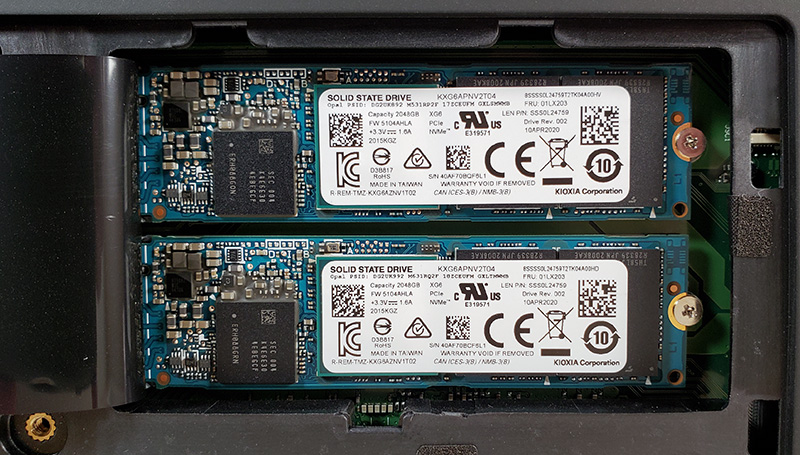
The AC Power Adapter for the Lenovo ThinkPad P17 is the usual Lenovo type, a 170W or 230W AC slim adapter. The brick is large and heavy, which adds weight to your accessory bag when on the go.
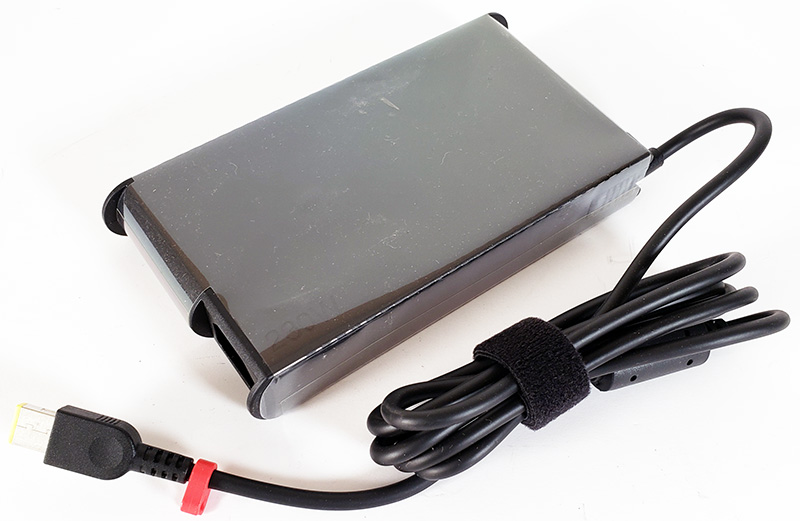
Next, let’s look at the Specifications for our Lenovo ThinkPad P17 (17″) Mobile Workstation and begin testing.

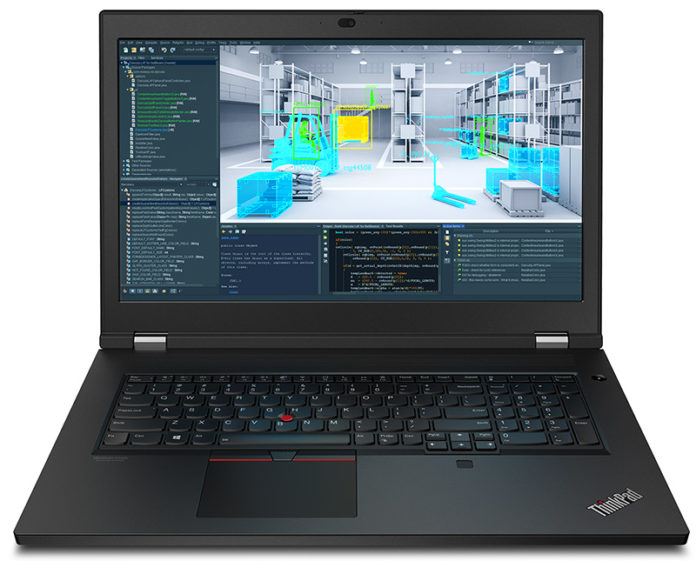



Excellent review!! Your CrystalDiskMark scores are dead-on the same as what I get with a single Kioxia XPG6 512GB (what the unit came with-contemplating storage upgrades at the moment). I’m thinking RAID isn’t set up correctly in your unit? My hardware specs aren’t anywhere near as impressive, nonetheless, for reference; I7-10750H, Quadro T2000, 32GB memory.
Although I’m going strictly from memory, as I wiped out my benchmark folder on a reinstall by not paying attention (oops), but I do recall using Peak Performance NVME mode in CDM, with numbers topping out at just under 32xx and just over 29xx.. I don’t recall my random 4k or other results being as impressive as what you obtained though, plus I just notice the size of the c: volume as 3.8TB, so I have to retract my earlier thoughts about the raid not being set up correctly… That just seems odd that the peak numbers would match a single drive of the same manufacturer/series so closely. I do recall those numbers very clearly… Will run CDM again just out of curiosity..
It’s a complete shame that Intel has such an iron grip on OEMs like Lenovo. Objectively inferior processors are going into “professional” machines now simply due to forced brand loyalty. Ryzen 4000 or 5000 series chips in these laptops would make them a far, far more compelling offering if paired alongside RTX 3080s for premier graphics performance. The sheeple will, of course, continue to recommend and to buy these units for the foreseeable future even as the performance and efficiency disparities between AMD and Intel grow. I’ll be skipping Lenovo’s offering here, yet again.
I liked the keyboard action and feedback response from my old Lenovo laptop, but did not like how the keys were arranged. That is because after using a full size keyboard, would often strike the delete, not the backspace key, by accident, and sometimes there was no going back.
Josiah,
I don’t think that the CPU has much impact on the GPU performance and hasn’t for a very long time.
I’d save my criticism for nvidia needing to do more with storage DMA and laptop vendors needing to afford the space to install PLP Optane, before I really feel like I should start bleating.
The fact is though, that possibilities like that definitely exist for the horizon, and until then I am buying laptops with a unusual cadence because covid brought forward so many usability and performance based usability requirements earlier than we planned for a general horsepower uplift, and just as I’m writing this maybe what I have said is a reason why a lot of people are feeling underwhelmed by the latest offerings, right now.
I’m using a two year old ThinkPad P71 mobile workstation with max specs from that time: Xeon E3-1515M V6 (Kaby Lake QuadCore), 32GB DDR4 ECC, nVidia Quadro P5000 16GB VRAM (nVidia Pascal generation, performance equals nearly a GTX1080), UHD 4K IPS display.
To my surprise Lenovo preinstalled Windows in the Windows 10 Pro for Workstations edition (Kernel features more functions from the Windows Server editions).
Hello and thanks for the review! I have a question about the display. How much of srgb/argb does that display cover? I figured since lenovo is not bragging about 100% argb, it just doesn’t? Thx.